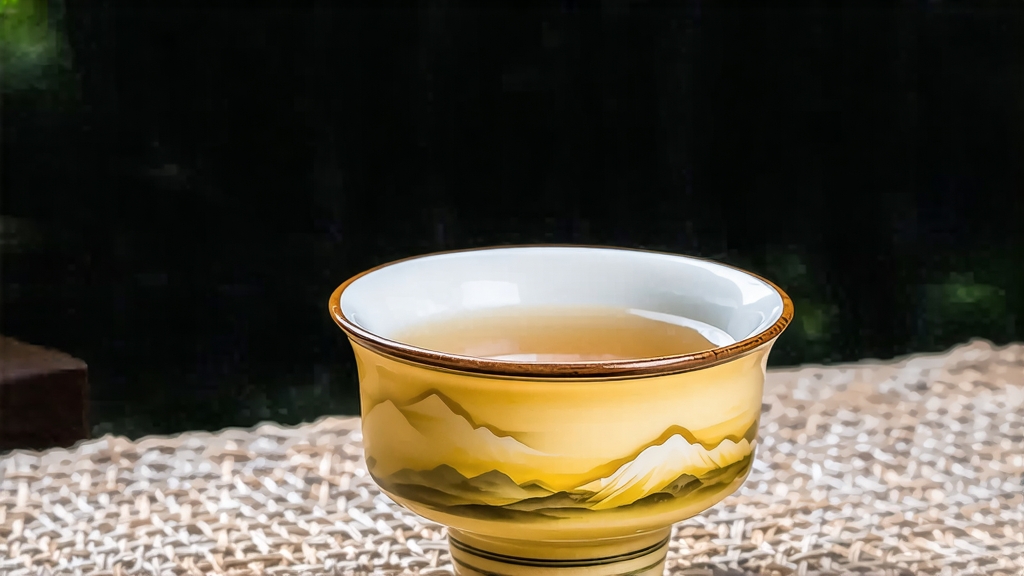
Tucked high on the mist-laced shoulders of Mt. Meng in Sichuan Province, Meng Ding Huang Ya has been whispered about in Chinese tea texts since the Tang dynasty (618-907). Court chroniclers record that it arrived in Chang’an as a spring tribute in 724 CE, escorted by mounted couriers who changed horses every ten li so that the dew on the buds would not evaporate. The emperor’s own tea master judged the liquor “the color of warm amber and the taste of a mountain stream kissed by orchids,” and for the next twelve centuries the tiny leaf continued to ride north each Qingming festival, often sealed inside hollow bamboo tubes lined with silk.
What makes Meng Ding Huang Ya a yellow tea rather than a green one is the hitherto-secret “sealed yellowing” step, a slow oxidation that occurs without any rolling or bruising. After the dawn plucking—only the unopened bud and the first unfolding leaf are taken—farmers spread the harvest on ramie mats beneath a thatched awning. For the first two hours the leaves are allowed to wither in the cool mountain air; then they are fired in iron woks kept at 160 °C for exactly ninety seconds, just long enough to inactivate the leaf enzymes while preserving a residual 8–10 % moisture. The still-warm buds are immediately wrapped in thick yellow cotton paper and placed inside a bamboo steamer whose lid is sealed with wet cloth. There they rest for six to eight hours at 35 °C, a micro-climate that encourages a non-enzymatic browning similar to the Maillard reactions in baking. The leaf slowly turns from jade to pale gold, developing the characteristic cocoa-butter aroma that distinguishes yellow teas from their greener cousins. A second, gentler wok firing at 90 °C follows, after which the leaves are again wrapped—this time in oiled parchment—and left overnight. The entire cycle is repeated three times, shrinking the original weight by 65 % and concentrating amino acids so that the final infusion delivers a brothy sweetness unmatched in any other lightly oxidized category.
Meng Ding Huang Ya is classified into five ascending grades, judged primarily by bud density and the integrity of the tiny white down. Supreme “Imperial Needle” consists entirely of buds measuring 12–15 mm, each one curling like a golden fishhook; First Grade allows one leaf to each bud, while Third Grade permits two leaves and a slightly darker hue. Regardless of grade, the dry leaf should smell of fresh chestnut and dried apricot, with no trace of the grassy sharpness associated with early-harvest green teas.
To brew the tea Western-style, use 3 g per 250 ml of water cooled to 85 °C; steep three minutes for a luminous straw-colored cup whose fragrance hovers between honeysuckle and warm brioche. For gongfu presentation, a 120 ml gaiwan is ideal. Rinse the vessel with 90 °C water, then fill it one-third full of leaf—roughly 5 g. The first infusion, fifteen seconds, releases a bright top note reminiscent of pear skin; subsequent steeps lengthen by five-second increments, revealing layers of almond milk, white peach, and a faint minerality borrowed from the granite soils of Mt. Meng. By the fifth infusion the liquor remains honey-sweet, proof of the tea’s extraordinary endurance.
Professional cupping follows a quieter rhythm. Place 2 g of leaf in a lidded white porcelain bowl, add 100 ml of 87 °C water, and infuse for four minutes. Before tasting, lift the lid slowly: the rising steam should carry three distinct aromas—initial chestnut, mid-level orchid, and a base note of sweet corn. Slurp the liquor across the palate; the texture must feel like light cream, coating the tongue without astringency. Swallow, then wait for the returning sweetness at the back of the throat; in top grades this aftertaste lingers more than twenty minutes, a phenomenon Chinese tasters call “sheng jin”—the generation of precious fluids.
Storage is simple yet critical. Because yellow teas retain a trace of active moisture, they dislike light, oxygen, and strong odors. The traditional Meng Ding method is to seal the tea in unglazed clay jars lined with mulberry paper; the jar is then buried in a rice chest so that the grains regulate humidity. Modern drinkers can replicate this by using a matte mylar bag flushed with nitrogen, kept inside an opaque tin at 5